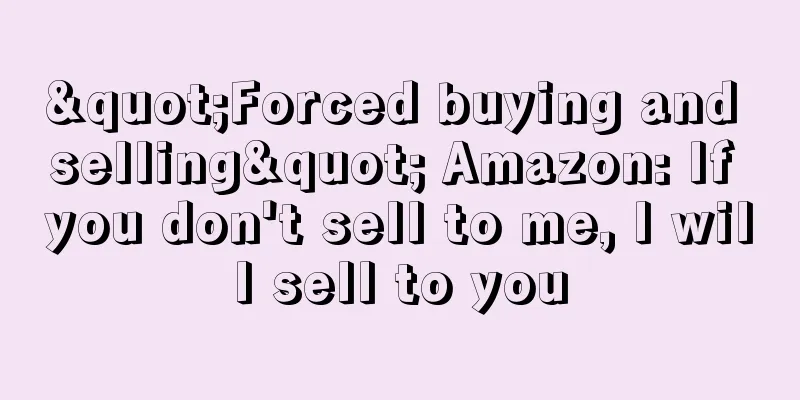"Forced buying and selling" Amazon: If you don't sell to me, I will sell to you

|
Recently, an Amazon seller who sells clothing products reported that the products he operates were forced to follow the sales of Amazon officials. Although the brand has been registered, it has no deterrent effect on this "official follow-up sales."
It is reported that after discovering the copycat sales, the seller immediately contacted customer service to negotiate a solution, but all he received was some official replies, which were useless. Afterwards, the seller directly contacted the account manager and asked Amazon's US team to explain and compensate. After a period of negotiation, the answer was obtained: Amazon officially wanted to buy the seller's goods!
However, the seller considered that if he sold the same product as Amazon, he would lose the pricing power of the product, and the final result would inevitably be that Amazon gradually monopolized the market for the product, so he decisively refused. I have to sigh: Amazon is simply forcing people to buy and sell! The incident is still under negotiation. It is reported that the seller's single link sales on Black Friday last year reached nearly 150,000 US dollars.
In fact, it is not new for Amazon's own brands to follow the sales of third-party sellers, but in most cases, once they are followed by the official sales, most third-party sellers will lose miserably.
However, according to this seller, even if it is followed by the official sales, the number of orders for its product link is almost unaffected. There are two main reasons. On the one hand, the seller's product is not exactly the same as the follow-up product, and is differentiated. Even if it is followed by the official sales, most sellers still choose to buy the original link product. On the other hand, the seller's product has a price advantage and participated in the Deal of the Day (which can be applied for through the investment manager).
At present, whether it is the endless rules of the Amazon platform or the platform's ambition to gradually expand its own brands, it is a big challenge for third-party sellers. And from the example of this seller, we can also see that improving the core competitiveness of their own products is the kingly way. Even if they are copied by the official, they still cannot steal the traffic of their own products. Amazon Forced buying and selling Chinese Sellers |
Recommend
What is Pinxiaoyidaiguan? Pinxiaoyidaiguan Review, Features
Pinxiaoyi is an Amazon agency under Guangzhou Hong...
Shopee Vietnam site payment cycle changed to once a week
On March 25, Shopee issued an announcement that s...
What is Central Bank of Bahrain (CBB)? Central Bank of Bahrain (CBB) Review, Features
<span data-docs-delta="[[20,{"gallery"...
What is Shenzhen Haima International Media Co., Ltd.? Shenzhen Haima International Media Co., Ltd. Review, Features
Shenzhen Haima International Media Co., Ltd. focu...
What is Dianjiang Technology? Dianjiang Technology Review, Features
Dianjiang Technology is a company that focuses on...
What is Nansen? Nansen Review, Features
Nansen is an Ethereum data provider. About Nansen...
Spanish "Black Friday" consumption forecast: online purchases will reach 86%!
In recent years, the Spanish e-commerce market ha...
UK-based Monsoon Accessorize creates a modern online platform
According to foreign media reports, British fashi...
The best-selling product has an annual sales volume of nearly 400,000 units, and Amazon's performance has soared in East China
In addition to Guangdong and Shenzhen, there have...
What is Bada.com? Bada.com Review, Features
Bada.com is an overseas company dedicated to cross...
What is Huanong Bailing E-commerce? Huanong Bailing E-commerce Review, Features
Huanong Bailing E-commerce is a leading comprehens...
What is Zhixing Cross-border Logistics? Zhixing Cross-border Logistics Review, Features
Zhixing Cross-border Logistics (Shenzhen) Co., Lt...
Etsy sales tips for 2021, a must-read for sellers!
As the world's leading online marketplace for...
Quick Look for Sellers: 5 SEO Tips for Podcasting
The number of people listening to podcasts increa...
What is KUKApp? KUKApp Review, Features
KUKApp is a ready-made mobile app with a completel...









